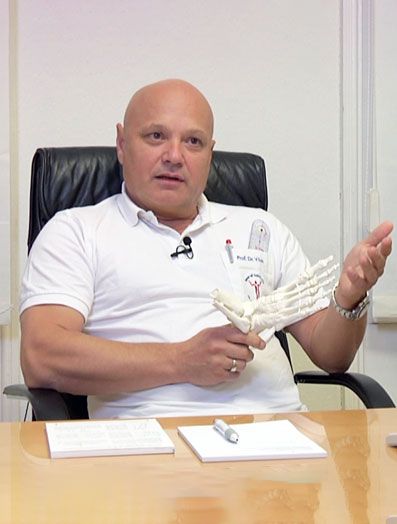Metatarsal exostosis
Metatarsal exostosis occur mainly on the inner side of the metartasus.
They have complicated names. They are called navicular bone protrusion and os tibiale externum.
Navicular bone protrusion
The words navicular bone protrusion is in actual fact an inaccurate explanation of the actual findings and describes an enlargement of the navicular bone (os naviculare) towards the inner side of the foot.
Os tibial externum
The os tibial externum is a large bone about 8 mm in diameter, which is embedded in the tendon of a muscle (posterior tibial muscle) as a sesamoid bone. It occurs in about 10 percent of the population. Sometimes it merges with the underlying scaphoid and is then called a cornuate navicular ("the horned navicular").
If such a bony prominence reaches a certain size, it can be bothersome in the shoe, causing skin irritation, calluses, sores, bursa formation and pain.
Treatment
Initially, treatment is conservative, using insoles and possibly shoe finishings. If complaints persist then the protruding parts of the bone and synovial bursa have to be removed surgically by minimally invasive approach.
Subsequent treatment
Walking can begin the day after the operation in a special shoe. After the wounds heal and the swelling goes down customized insoles should be made to support the arch of the foot.
In case surgery has been performed on bilaterally, forearm crutches can be used for two weeks for support.
Ability to work
Despite the relatively small intervention office workers should resume work only after one to two weeks. Heavy physical activity should be resumed only after three to five weeks.
Sports activities
Sports which put pressure on the foot can only be resumed at the earliest after six to eight weeks.
Results
In over 90 percent of cases symptoms disappear completely or at least a significant improvement is achieved.
Complications
In particular with os tibiale externum swellings can take up to 2-3 months to subside. Impairment of wound healing and infection can occur in about 2 percent of cases, which however, up until now has never occurred amongst our patients.



